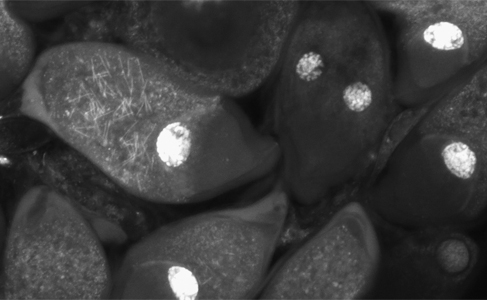
Gage Lab
Dept. of Molecular and Cell Biology
University of Connecticut - Storrs
Research-Termite Symbioses
Symbioses in termites
Our lab is working on several aspects of the symbiotic gut community in the Northeastern termite Reticulitermes flavipes. The community under study consists of bacteria, archaea and protists. These organisms exist symbiotically within the termite gut, and together with the termite convert wood to food (acetate). The capabilities of the termite depend on the composition, spatial distribution and structure of the community in its gut which in large part consists of poorly understood protists. The work under way right now focuses on:
•Understanding the community of bacterial symbionts associated with different protist types. This is being done using high-throughput sequencing of single protist cells. In addition microscope-based techniques are being used to understand transfer of symbionts from protist to protist. (Michael Stephens)
•Investigations into the genome structrure and evolution of protist endosymbionts of the Endomicrobium genus. (Michael Stephens)
•Analysis of the CRISPR loci endosymbiotic bacteria residing in protists (Michael Stephens and KJ Justin)
•Developing culturing and genetic tools for understanding the roles of Dysgonomonas bacteria in the termite gut ecosystem. (Charles Bridges)
•Studies on the roles of free-living bacteria and maintainence of protists in the gut. (Charles Bridges)
This work has been done in collaboration with the labs of: Dr. Joerg Graf, Dr. Jared Leadbetter, Dr. Ken Noll, Dr. Leslie Shor, Dr. William Mustain and Dr. Ranjan Srivastava
Selected papers - Termite symbioses

Trichonympha agilis isolated from the hindgut of the termite R. flavipes. Cells stained with a combination of DAPI and acridine orange. Endosymbiotic bacteria can be seen within. One protist is undergoing division and has two nuclei.
Oligotyping bacterial symbionts of hindgut protists reveals complex population structures and transmission trends in the termite Reticulitermes flavipes. bioRxiv get pdf
Characterization of the Core and Caste-Specific Microbiota in the Termite, Reticulitermes flavipes. FrontMicro 7:171 get pdf
Low-abundant bacteria drive compositional changes in the gut microbiota after dietary alteration. Microbiome get pdf